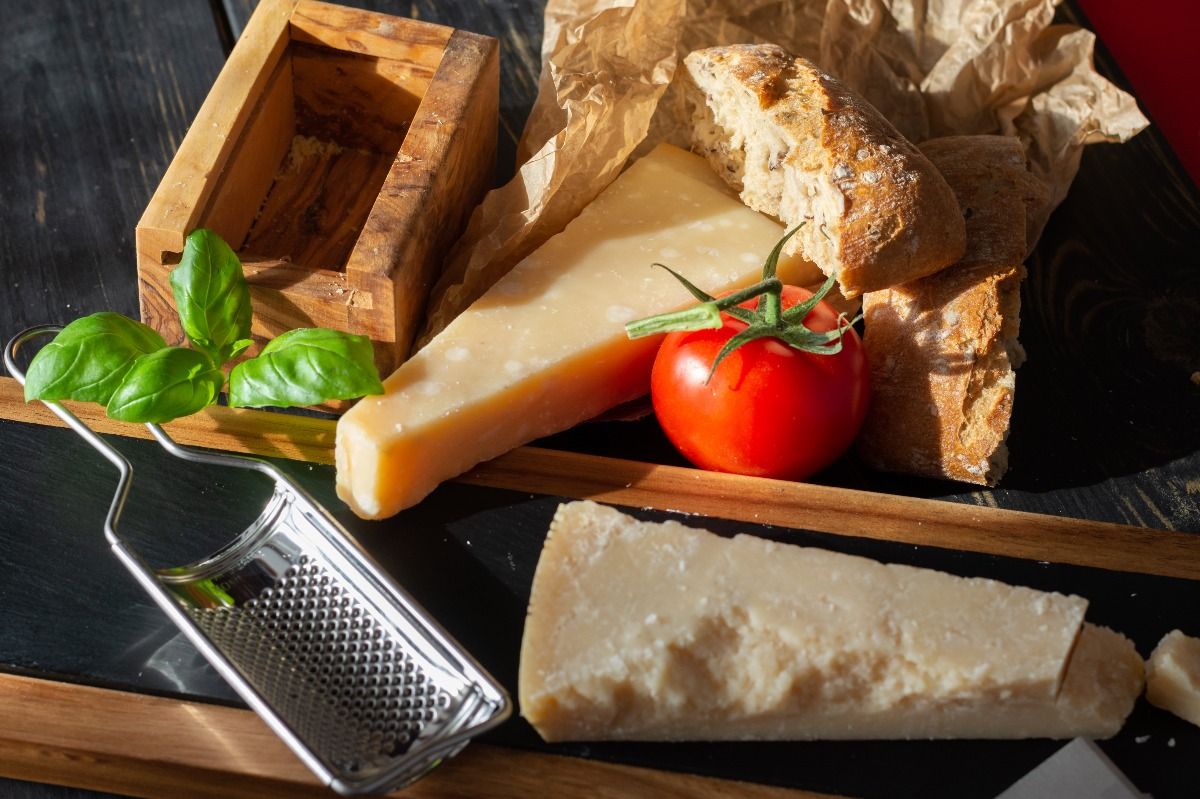Picture this: You're in the grocery store, picking out a cheese to sprinkle over your bowl (or blate) of onion-buttered noodles or rigatoni with vodka sauce. You spot the section of the cheese aisle that could be described, loosely speaking, as "Italian." You scan each row and see several options that could fit the bill — craggy hunks labeled "Parmigiano Reggiano," neat isosceles triangles that read "Parmesan," and a whole host of pre-grated tubs sporting either one name or the other. Are these actually different products? Are they interchangeable? It's a reasonable question, though the answer can be a little bit confusing. While the cheeses share similarities, Parmigiano Reggiano and Parmesan are not the same thing.
Parmigiano Reggiano hails from Italy, specifically from the Emilia-Romagna region (including the provinces of Parma and Emilia Reggio, giving the cheese its name) in the northern part of the country. As a legally-protected product — the cheese holds DOP (denominazione d'origine protetta) status — Parmigiano Reggiano must be produced in these designated areas, which align with its historical provenance. So, when you grab a hunk of parm at the store and see 'Parmigiano Reggiano' imprinted onto the rind or on the label, know that you're getting the real thing.
Equally important to where Parmigiano Reggiano is produced is how it's produced. The cheese must be aged for a minimum of 12 months, with 24 to 36 months being the most common maturation length. Additionally, the only ingredients that can be used to make real Parmigiano Reggiano are "milk, salt, and rennet only, with no additives and no preservatives." Though it varies depending on its age, the cheese is defined by its slightly grainy, crystalline, and crumbly texture, as well as its nutty, complex flavor.
"Parmesan," in contrast, is not a legally protected category — at least not in the U.S. According to Serious Eats, this means that domestic Parmesan doesn't have to follow the same rigid standards that define Parmigiano Reggiano. Parmesan can be made anywhere, with any milk, and be aged for any amount of time. As a result, it often lacks the consistency and key attributes of the real thing. For example, the crystals present in Parmigiano Reggiano aren't usually found in Parmesan, and the latter often features a smooth, not crumbly, texture. Moreover, additives like calcium chloride and artificial coloring are allowed in Parmesan, as are other nontraditional steps in the cheesemaking process. This is especially the case with pre-grated domestic Parmesan, which typically contains a percentage of cellulose — a plant-derived fiber — to prevent it from clumping.
Ultimately, the flavor, texture, and complexity of true Parmigiano Reggiano is hard to beat and is worth seeking out — especially in cases where you'll be eating the cheese on its own. But, in a pinch, a high-quality Parmesan grated over a plate of pasta will certainly do the trick.




Shares